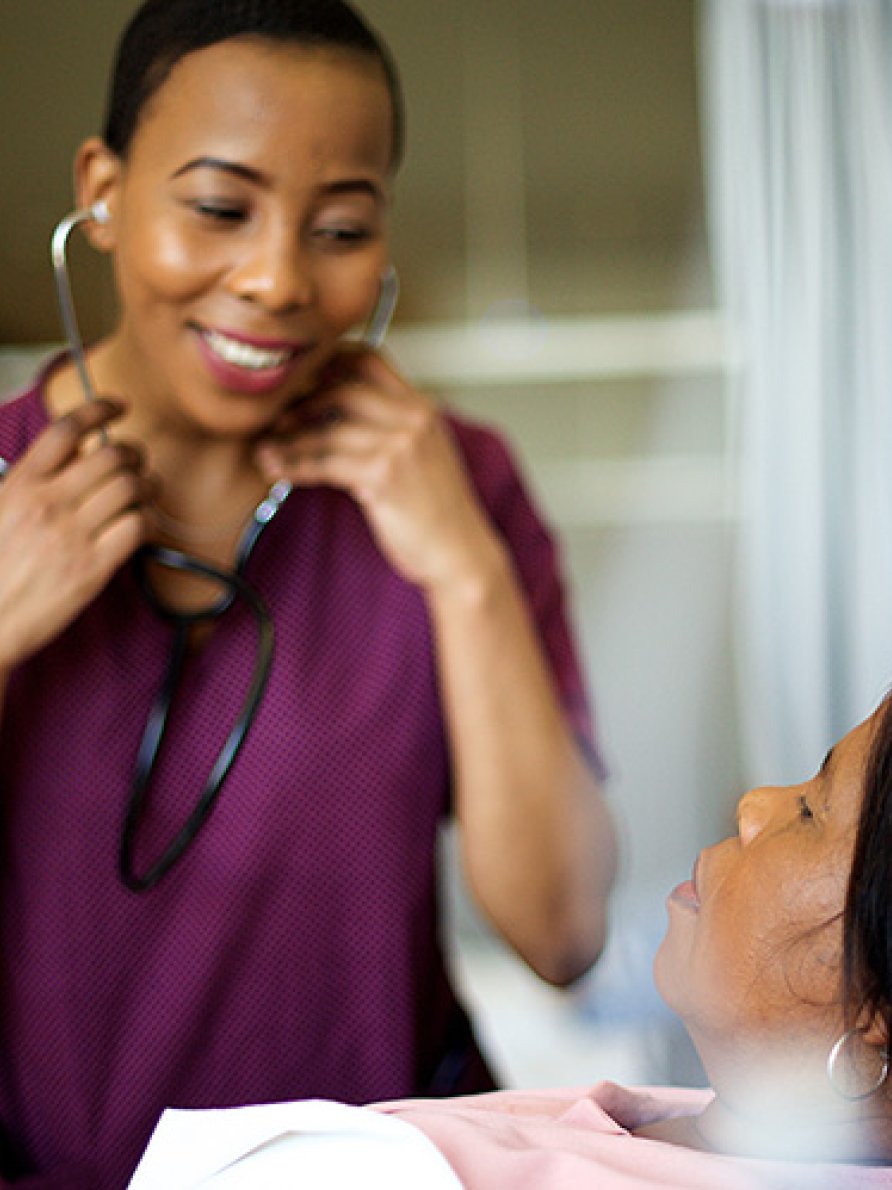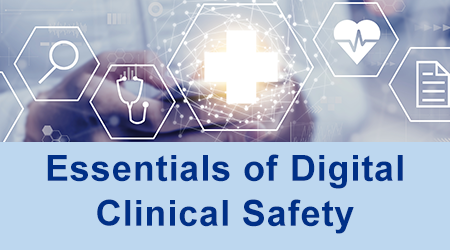Top Responsibilities of a Scientific Safety And Security Policeman in Modern Healthcare
In the advancing landscape of modern medical care, the duty of a Professional Security Policeman has actually become progressively critical. These professionals are tasked with methodically determining and taking care of clinical threats, yet their duties prolong much past mere oversight. From establishing comprehensive safety and security methods to promoting a society of security within medical care teams, their impact is profound. Moreover, as they navigate the complexities of governing compliance and staff training, one have to take into consideration how these initiatives directly influence individual care end results. What are the underlying challenges they encounter in this complex role, and just how can they be successfully attended to?
Threat Analysis and Management

The CSO collaborates with multidisciplinary teams to gather information on incidents and near misses out on, facilitating a society of transparency and continual enhancement. By examining patterns and fads, the CSO can determine areas calling for treatment, inevitably decreasing the probability of unfavorable events. The CSO makes sure compliance with regulative requirements and standards, which offer to boost client safety and security and reduce obligation dangers.
Effective communication is vital; the CSO needs to communicate danger findings to stakeholders, consisting of health care patients, managers, and service providers. Furthermore, the CSO must remain abreast of arising risks related to new technologies and treatment modalities, adapting risk monitoring approaches accordingly. Inevitably, by fostering an environment of proactive danger management, the Professional Security Officer adds significantly to the total safety and top quality of treatment delivered within healthcare setups.
Establishing Safety And Security Methods

In collaboration with multidisciplinary teams, the Clinical Safety Police officer evaluates data from case records and run the risk of assessments to notify procedure advancement. This includes establishing clear, workable procedures for various situations, such as infection control, medicine administration, and emergency action. Making certain that protocols are not only effective yet additionally practical is important; they have to be conveniently understood and integrated into everyday operations.
In Addition, the Professional Security Policeman stays updated on the most recent advancements in safety and security measures and medical care technologies, adapting protocols appropriately. Normal evaluations and updates of these protocols are required to guarantee they stay appropriate and reliable in resolving emerging threats. Eventually, strong safety and security protocols work as a foundation for a culture of safety and security, cultivating an atmosphere where person treatment is focused on and dangers are systematically reduced.
Conducting Training Procedure
While safety and security protocols give the framework for danger monitoring, conducting effective training sessions is necessary to ensure that all health care staff excel in these methods. A Medical Safety and security Policeman plays an essential function in establishing and performing comprehensive training programs customized to the details demands of numerous teams within the health care setup. This consists of arranging workshops, seminars, and hands-on training that deal with existing safety requirements, emergency situation treatments, and making use of safety devices.
Furthermore, the Clinical Safety Police officer must evaluate the expertise gaps among employee, making certain that training sessions are engaging and relevant. Employing a mix of instructional methods, such as interactive simulations and instance research studies, can improve understanding and retention. Clinical safety officer. Consistently arranged training refreshers also strengthen team readiness and adaptability to evolving safety and security protocols
Additionally, fostering a society of security within the organization is essential. The Medical Security click here to find out more Police officer need to motivate open dialogue and comments throughout training sessions, enabling team to voice problems and share experiences. Ultimately, well-conducted training sessions equip health care professionals to react effectively to potential threats, promoting a much safer environment for both individuals and team.
Tracking Conformity Criteria
Monitoring compliance criteria is integral to the function of a Medical Security Policeman, making certain that all safety procedures are consistently stuck to across the healthcare center. This responsibility involves regular evaluations of clinical practices, policies, and procedures to straighten them with well-known regulative and organizational standards.
The Clinical Safety Police officer must perform organized audits and reviews to recognize potential voids in conformity, cultivating an aggressive strategy to client security. By implementing durable monitoring systems, the policeman can effectively track adherence to safety and security procedures and rapidly address any kind of variances.
Furthermore, the Medical Safety Police officer collaborates with numerous divisions to ensure that all employee know and comprehend conformity needs. This includes assessing incident reports, evaluating risk administration methods, and providing feedback to enhance practices.
In addition, the policeman has to stay updated on progressing medical care regulations and requirements, ensuring that the facility adapts as necessary. By cultivating a culture of accountability, the Medical Security Police officer plays an essential function in improving the general safety and top quality of treatment delivered to patients, ultimately adding to much better health and wellness end results and organizational honesty.

Advertising a Culture of Security
Developing a society of safety within a healthcare facility is necessary for reducing threats and improving patient treatment. A Clinical Safety Officer (CSO) plays an essential duty in promoting this environment by advertising liability, transparency, and continual renovation among team whatsoever levels. The CSO executes and establishes safety and security methods that encourage open communication and coverage of occurrences without worry of retribution.
To effectively promote a culture of security, the CSO needs to take part in regular training sessions that emphasize the significance of individual safety and risk monitoring. These sessions should include real-life instance researches and simulations to help team identify possible risks and understand their responsibilities in reducing them. Furthermore, the CSO ought to facilitate interdisciplinary collaboration, ensuring that all departments interact to attend to safety and security worries adequately.
Routine evaluations and comments mechanisms go to this site are vital elements of this culture. The CSO should evaluate safety data, identify fads, and share findings with the whole company to drive enhancement initiatives. By prioritizing safety and security, the CSO cultivates an atmosphere where team really feel equipped to advocate for their individuals, causing enhanced care high quality and eventually, better health and wellness outcomes.
Verdict
Finally, the function of a Medical Safety and security Officer is essential to cultivating a risk-free medical care environment. By methodically determining medical dangers, developing detailed safety and security protocols, and performing specialized training, these professionals enhance team readiness and compliance with regulative requirements. Promoting a culture of security through open communication and interdisciplinary collaboration significantly adds to enhanced patient care. Ultimately, the initiatives of Professional Safety and security Police officers make certain that safety remains a paramount emphasis within medical care setups.
Inevitably, go to my blog by fostering an atmosphere of aggressive danger management, the Professional Safety Policeman contributes dramatically to the overall security and top quality of care supplied within health care setups.
In Addition, the Clinical Safety and security Policeman continues to be updated on the newest improvements in safety and security steps and health care modern technologies, adapting procedures as necessary. Eventually, well-developed safety and security methods serve as a foundation for a culture of safety and security, cultivating an atmosphere where individual treatment is prioritized and dangers are methodically alleviated.
To properly advertise a culture of safety and security, the CSO should engage in routine training sessions that stress the relevance of client security and threat administration (Clinical safety officer). Eventually, the efforts of Professional Safety Police officers make sure that safety stays a vital focus within medical care setups